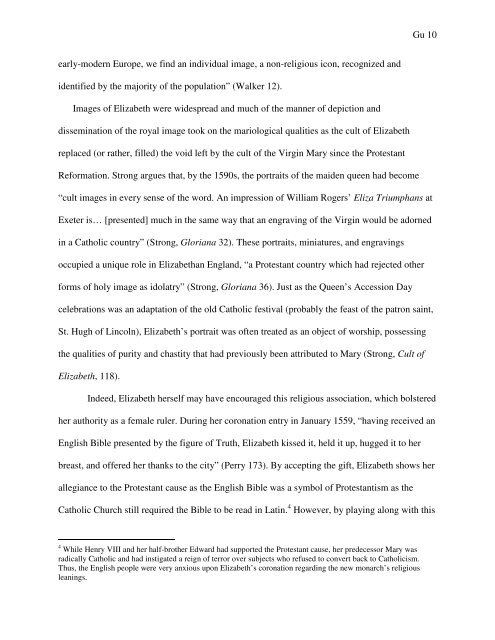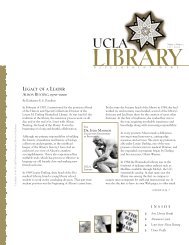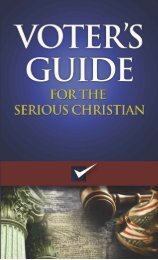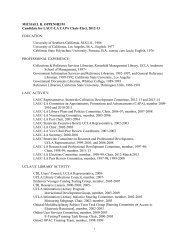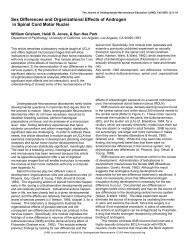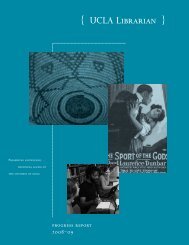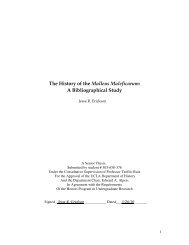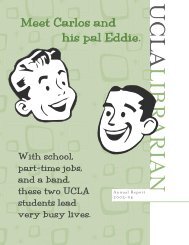Research Paper - UCLA Library
Research Paper - UCLA Library
Research Paper - UCLA Library
Create successful ePaper yourself
Turn your PDF publications into a flip-book with our unique Google optimized e-Paper software.
early-modern Europe, we find an individual image, a non-religious icon, recognized and<br />
identified by the majority of the population” (Walker 12).<br />
Images of Elizabeth were widespread and much of the manner of depiction and<br />
dissemination of the royal image took on the mariological qualities as the cult of Elizabeth<br />
replaced (or rather, filled) the void left by the cult of the Virgin Mary since the Protestant<br />
Reformation. Strong argues that, by the 1590s, the portraits of the maiden queen had become<br />
Gu 10<br />
“cult images in every sense of the word. An impression of William Rogers’ Eliza Triumphans at<br />
Exeter is… [presented] much in the same way that an engraving of the Virgin would be adorned<br />
in a Catholic country” (Strong, Gloriana 32). These portraits, miniatures, and engravings<br />
occupied a unique role in Elizabethan England, “a Protestant country which had rejected other<br />
forms of holy image as idolatry” (Strong, Gloriana 36). Just as the Queen’s Accession Day<br />
celebrations was an adaptation of the old Catholic festival (probably the feast of the patron saint,<br />
St. Hugh of Lincoln), Elizabeth’s portrait was often treated as an object of worship, possessing<br />
the qualities of purity and chastity that had previously been attributed to Mary (Strong, Cult of<br />
Elizabeth, 118).<br />
Indeed, Elizabeth herself may have encouraged this religious association, which bolstered<br />
her authority as a female ruler. During her coronation entry in January 1559, “having received an<br />
English Bible presented by the figure of Truth, Elizabeth kissed it, held it up, hugged it to her<br />
breast, and offered her thanks to the city” (Perry 173). By accepting the gift, Elizabeth shows her<br />
allegiance to the Protestant cause as the English Bible was a symbol of Protestantism as the<br />
Catholic Church still required the Bible to be read in Latin. 4 However, by playing along with this<br />
4 While Henry VIII and her half-brother Edward had supported the Protestant cause, her predecessor Mary was<br />
radically Catholic and had instigated a reign of terror over subjects who refused to convert back to Catholicism.<br />
Thus, the English people were very anxious upon Elizabeth’s coronation regarding the new monarch’s religious<br />
leanings.


